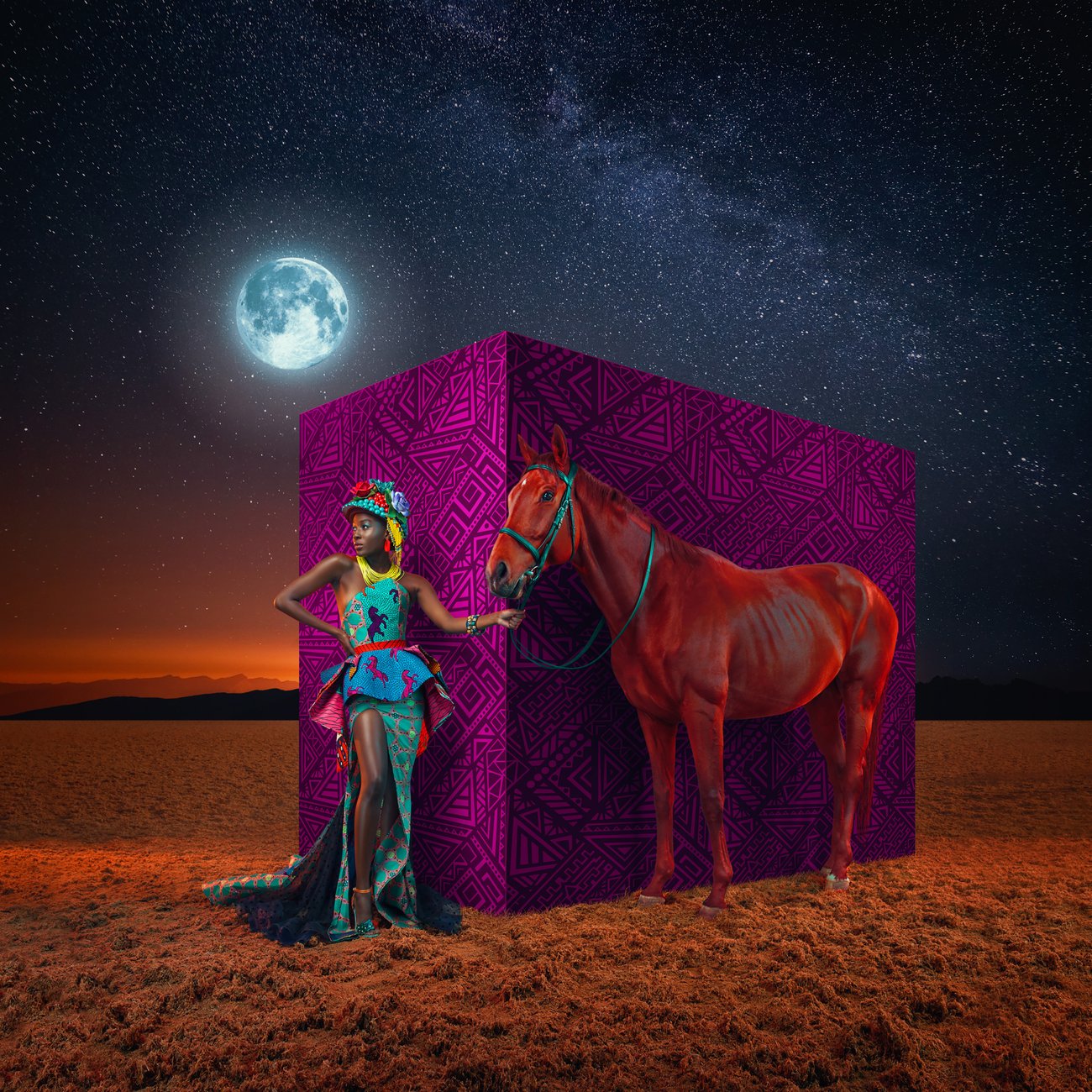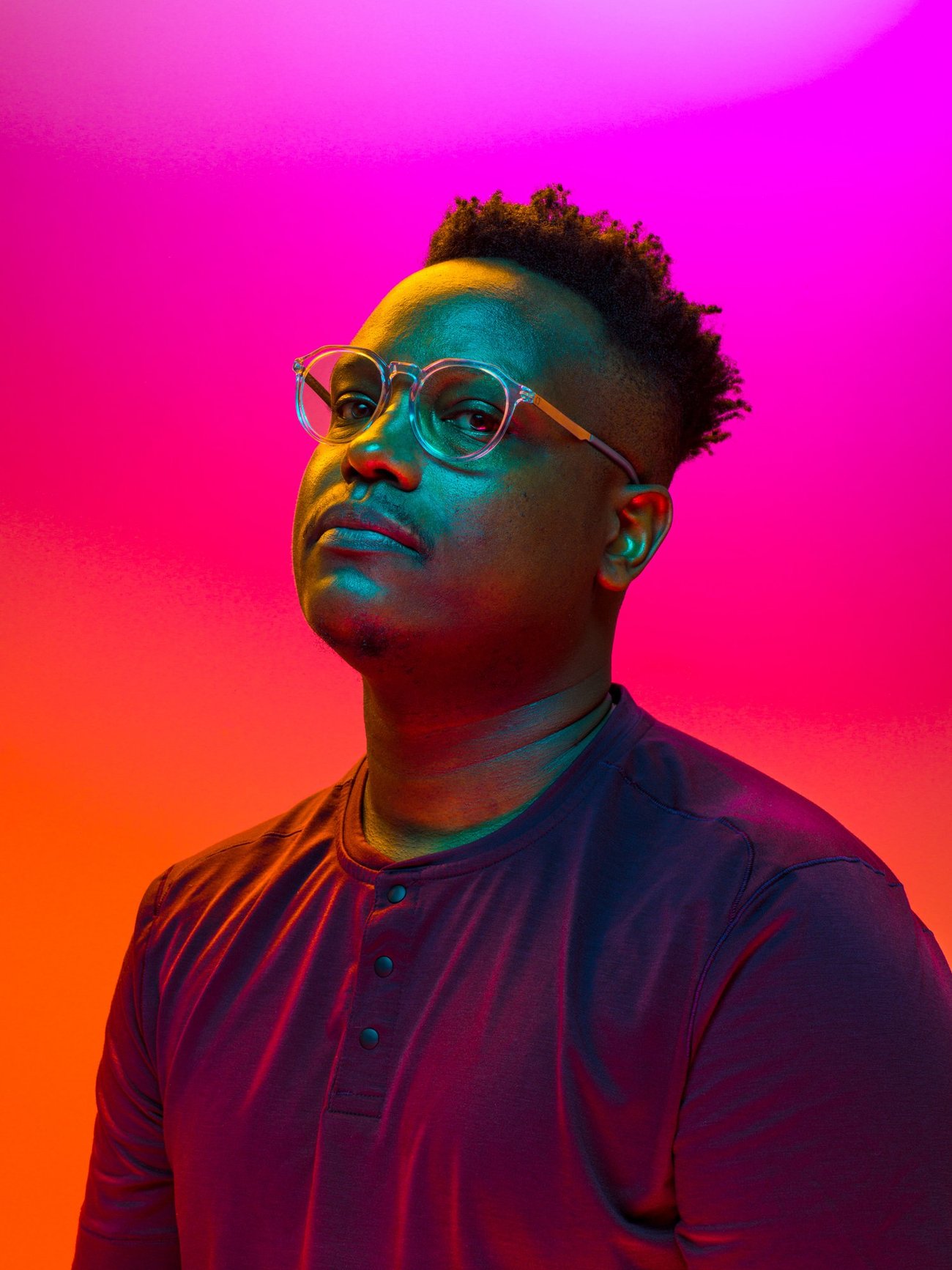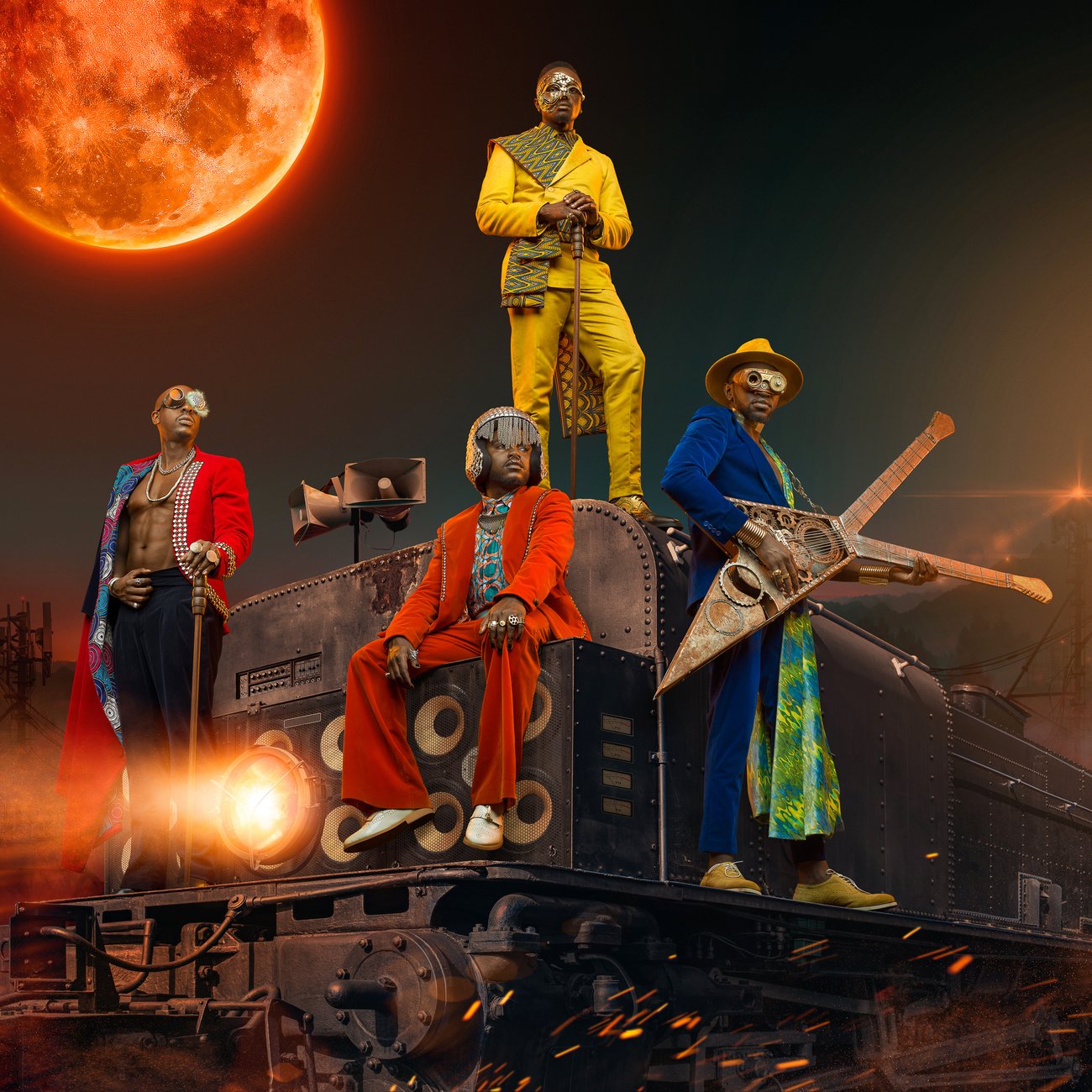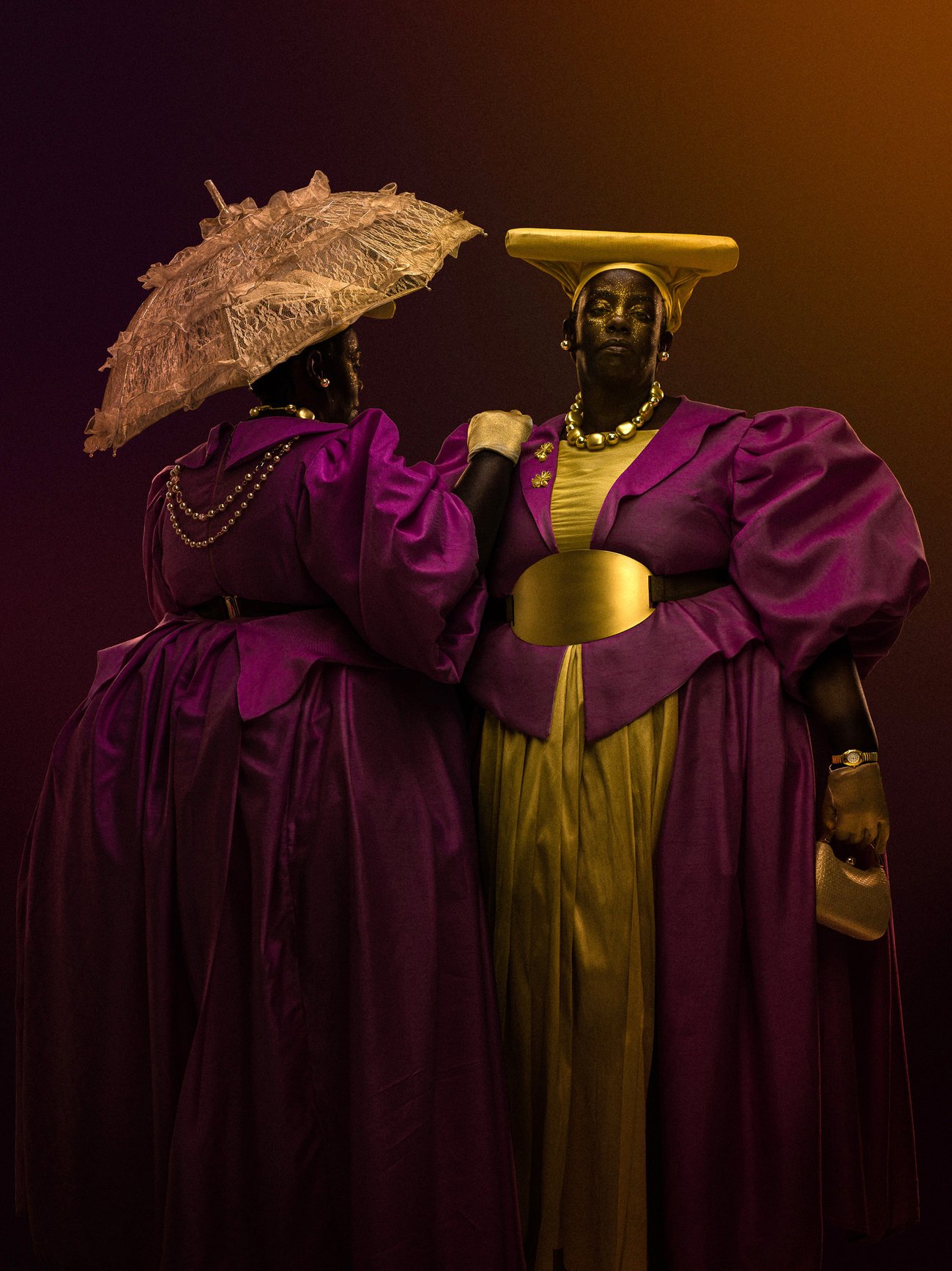Osborne Macharia

Osborne Macharia (he/him) is a Kenyan-Canadian photographic artist, based in Vancouver, BC, whose creative expression combines photography, motion, and world-building. Heavily influenced by his experience growing up in Kenya, Osborne draws inspiration from his culture, surroundings, and faith to influence his artistic vision. As an artist, his body of work falls within the genre known as AFROFUTURISM, which he describes as an artistic expression that seeks to challenge the post-colonial African narrative by integrating historical elements, present culture, and future aspirations of people of African ancestry using narrative, fantasy, and fiction to imagine a New Africa.
Hi Osborne! Tell us a little about yourself — when did you first become interested in photography and how did you get to where you are today?
My journey into photography began during architecture school, when I failed a unit and had to take a year off. It was then that I discovered photography as a craft. Without realizing it, I began creating work that was soon described as Afrofuturism—a way to challenge perceptions and celebrate my culture. I found a voice that connects with my heritage while imagining bold, alternate futures. Over the years, I’ve developed a style that reimagines African narratives—vibrant, unapologetic, and rich with meaning.

“I’m inspired by the untold stories of Africa—its rich cultures, traditions, and histories—and imagining how they could evolve in alternate realities.”— Osborne Macharia
How would you define or describe Afrofuturism?
I describe Afrofuturism as 'An artistic expression that seeks to challenge the post-colonial African narrative by integrating historical elements, present culture and future aspirations of people of African ancestry using Narrative, Fantasy and Fiction to imagine the New Africa.’
Governed by two key elements, Cultural Identity and Fiction, it creates a powerful platform to convey important messages on topics such as African Identity, Equality, Representation, Gender Abuse, FGM, Albinism, Dwarfism, Conservation and Care for the Elderly.
Your photography style is incredibly distinctive, with vivid colors, compelling narratives, and striking models. How did you develop this unique visual aesthetic?
Developing my visual aesthetic has been a journey of embracing storytelling as the core of my art. I draw inspiration from African culture, mythology, and futuristic elements, blending them to create narratives that challenge stereotypes and celebrate identity. My use of vivid colours, striking compositions, and compelling characters stems from a desire to immerse viewers in alternate realities—worlds that are bold, unapologetic, and rich with meaning. It’s about fusing tradition with imagination, crafting visuals that resonate with history while pushing the boundaries of what African narratives can look like in a global context.

Your images, such as those in the "Daughters of the Rift" and "League of Extraordinary Grannies" series, transport viewers to entirely new worlds. What inspires the story concepts behind these photographs?
The concepts behind my images are born from constantly asking "What if?" I'm inspired by the untold stories of Africa—its rich cultures, traditions, and histories—and imagining how they could evolve in alternate realities. For example, "Daughters of the Rift" explores the concept of the African Rift Valley without geopolitical borders and a tribe that emerges whose primary form of expression is beadwork. "League of Extraordinary Grannies" reimagines retired elderly women as stylish world travellers enjoying the fruits of their labour. These narratives come from a mix of historical research, cultural symbols, and a futuristic lens, creating worlds that are both familiar and fantastical. It's about rethinking what African identity could look like and using visual storytelling to challenge, celebrate, and expand that vision.

Could you walk us through your process for conceptualizing and executing a creative photo shoot?
Every project begins with a concept deck, outlining the story, mood, and visual references, which I share with my team. Their feedback is invaluable, helping refine the vision and push it further. Pre-production is incredibly detailed: from designing costumes, scouting locations and casting models who embody the story’s essence. On set, every element—from lighting to styling—is meticulously aligned with the narrative. Post-shoot, retouching becomes an extension of storytelling, enhancing the surreal and cinematic feel while staying true to the concept. It’s a collaborative journey.

In addition to your personal projects, you've collaborated with a variety of high-profile clients like Marvel's Black Panther, Pepsi, Campari, and sports figures like Steph Curry. How do you approach the creative process when working with clients, and what does successful collaboration look like to you?
The process is always the same as planning a personal shoot but with more stakeholders involved and better budgets to create more intricate costumes. Most of the creative direction comes from the advertising agencies in charge of the brands, and my role is to add my visual touch to their idea. I mostly enjoy projects whereby the brand has an idea but see me as a ‘collaborator’ from the very start, as if I’m part of their creative team for the duration of the project.
What stands out to you as the most memorable project you've had the opportunity to work on?
Where do I even start? One project that stands out is "No Touch Am," where we reimagined the Hyena Men of Northern Nigeria as stylish protectors of the forest. This collaboration with Azu Nwagbogu from the African Artists Foundation was unforgettable. My team and I spent a week in Lagos working with three Hausa men, a baboon, and a hyena. It was a wild experience—from transporting a hyena in a taxi to dealing with the chaos when the strobes startled it and witnessing our talent's reaction to wearing tailored suits for the first time. It was a blend of culture, storytelling, and the unexpected, making it truly special.

Are there any specific pieces of equipment, such as particular lenses or lighting setups, that you consider essential for your shoots?
Absolutely. Over the past decade, I’ve become a devoted fan of the Hasselblad camera system and lenses. Their cameras consistently produce stunning images with exceptional color accuracy.
When it comes to lighting, my go-to brand is Profoto. Their reliability and consistent color temperature on set make it hard to work with anything else.
What tools and techniques do you use when it comes to post-processing your images?
For post-processing, I rely on Adobe Photoshop and Lightroom to bring my vision to life. Colour grading is central to my process, setting the mood and emotion inspired by cultural narratives and futuristic aesthetics. I often layer custom textures and overlays to add depth and character. Every detail matters. For projects that require imaginative backgrounds then I’ll work with a CGI artist to create custom environments.

Ultimately, what message or feeling do you hope viewers take away from your work?
I just want to share my beautiful culture with the world. I hope it inspires and empowers the African diaspora, especially people who desire to connect with their roots. What I create is a visual language of EMPOWERMENT.

Thank you for sharing with us, Osborne! To view more of Osborne’s work, visit his website, Behance, and follow him on Instagram.
Osborne was nominated by Noun Project.